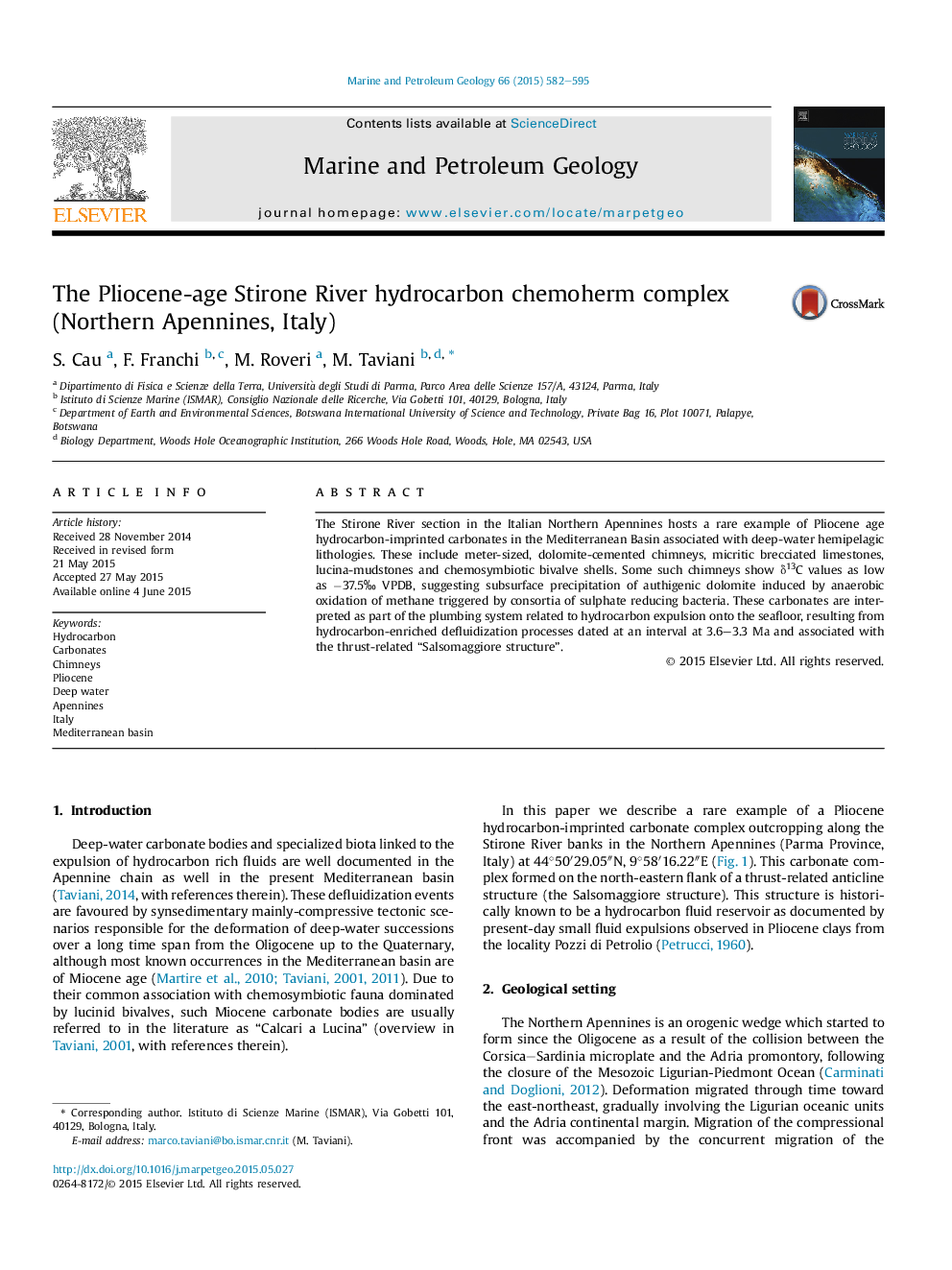| Article ID | Journal | Published Year | Pages | File Type |
|---|---|---|---|---|
| 4695550 | Marine and Petroleum Geology | 2015 | 14 Pages |
•We present one of the few known cases of a Pliocene-age deep-water seep carbonate system.•This complex system was fed through dolomitic chimneys and documents former hydrocarbon seepage onto the seafloor.•The expulsion of hydrocarbon deep-seated fluids conducive to authigenic carbonate formation has been dated 3.6 and 3.0 My.
The Stirone River section in the Italian Northern Apennines hosts a rare example of Pliocene age hydrocarbon-imprinted carbonates in the Mediterranean Basin associated with deep-water hemipelagic lithologies. These include meter-sized, dolomite-cemented chimneys, micritic brecciated limestones, lucina-mudstones and chemosymbiotic bivalve shells. Some such chimneys show δ13C values as low as −37.5‰ VPDB, suggesting subsurface precipitation of authigenic dolomite induced by anaerobic oxidation of methane triggered by consortia of sulphate reducing bacteria. These carbonates are interpreted as part of the plumbing system related to hydrocarbon expulsion onto the seafloor, resulting from hydrocarbon-enriched defluidization processes dated at an interval at 3.6–3.3 Ma and associated with the thrust-related “Salsomaggiore structure”.
